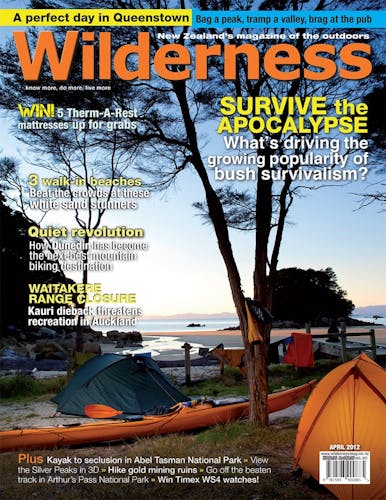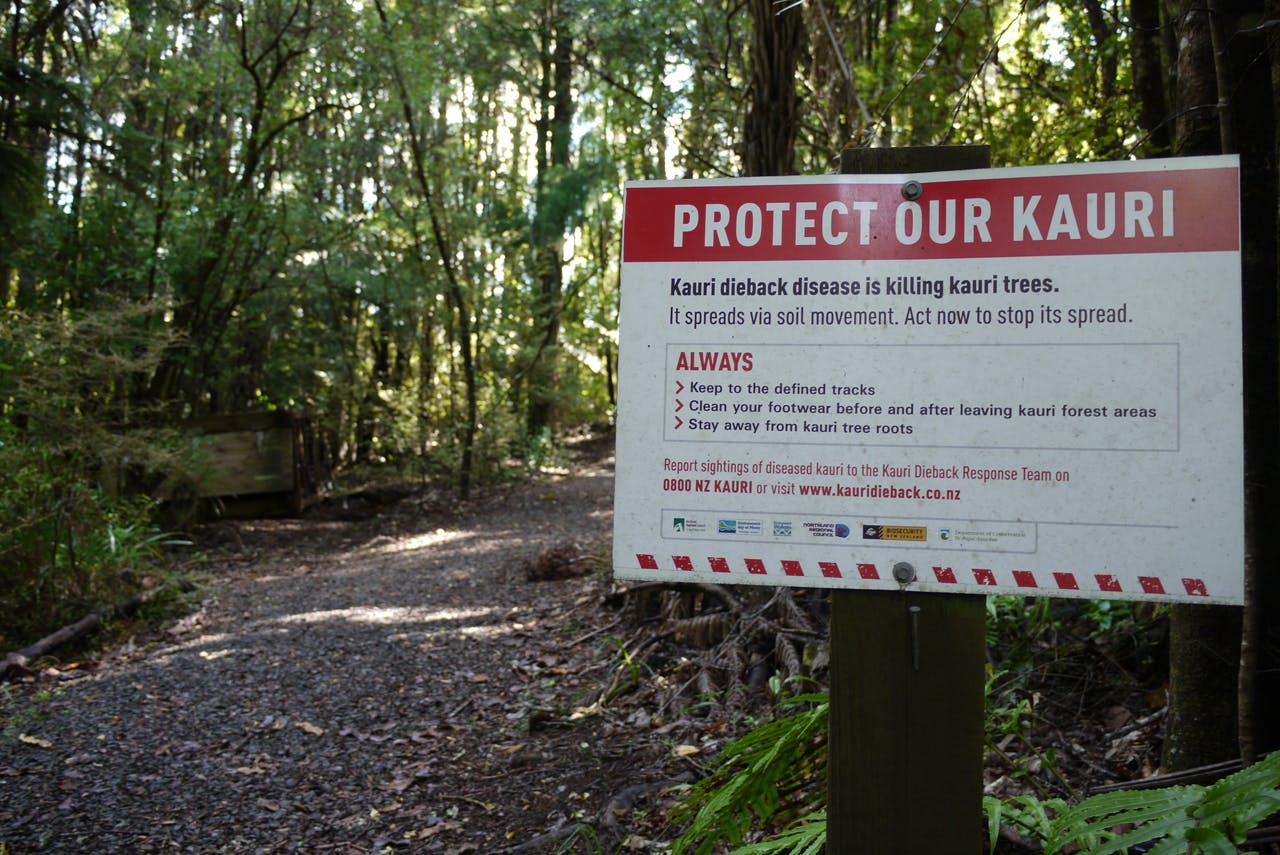Trampers are thought to be the main vector for kauri dieback, so track closures in the Waitakere Ranges Regional Park are on the cards, reports Josh Gale
They stand out like chemotherapy patients in a line of healthy people.
Their gaunt, leafless branches stretch upwards, as if seeking a final kiss from the sun’s warming rays.
It was early March on a walk in Auckland Centennial Park with Steve Bell, the principal ranger of Waitakere Ranges Regional Park.
He pointed to a stand of kauri dying from the deadly disease, caused by the pathogen phytophthora taxon agathis (PTA), that’s felling kauri here and elsewhere.
Tragically, Cascades Kauri was one of the only areas in the Waitakere Ranges that wasn’t milled for timber. The mature kauri found here are a major drawcard to visitors wanting to experience the majesty of a kauri forest.
But now, despite being missed by the wood saw, the area is facing a more insidious threat; one that stands to be far more difficult to stop than milling.
Steve Bell escorts me on a stroll of the Auckland City Walk and stops to chat to fellow walkers about the kauri-killing disease as well as a new boardwalk the council has installed.
We meet an older couple who’re trying to build up their fitness to tramp the Milford Track.
They’re not too keen on the long, elevated boardwalk that looks like something from a Japanese garden. But they’re clear about what they think should be done to protect kauri from PTA.
“Close the tracks,” the man says, as soon as Bell raises the issue. “Just close them,” he repeats a couple of times during the conversation.
In fact, that’s exactly what Auckland Council parks staff have proposed to the Council’s Parks, Heritage, Recreation Forum, chaired by passionate west coaster Sandra Coney.
Already, on the opposite side of Auckland, DOC has closed Mataitai Forest Reserve, the oldest and largest kauri forest in the region, for a period of five years.
DOC flora biosecurity ranger Steve Benham told Wilderness all of the department’s signage has been removed and a gate has been installed across the car park.
Only members of the Manukau Tramping Club and local residents who sign an agreement to meet strict standards will be allowed to enter. However, a track which leads to an 800-year-old kauri is now closed to everyone, including these groups.
Benham said while DOC has no plans to close other areas of land it manages in the Auckland region, he can’t rule it out completely. Stopping the spread of PTA is “an urgent business”.
Creating “kauri refugiums”, as Benham calls them, is a step to not only protect kauri, but the ecosystems that depend on them. “If we lose kauri then we lose a whole sweep of species that depend on kauri for their existence,” he said. “It’s not just one species we’re losing, we’re losing many more than we can envisage.”
In March, the Parks, Heritage, Recreation Forum also recommended the closure of 27km of tracks in the Waitakere Ranges, to create kauri protection zones in areas where tracks run through kauri stands that appear to be unaffected by dieback.
Between May and June in 2010, Auckland Council staff used a helicopter to conduct an aerial survey over 17,000ha of the Waitakere Ranges to identify kauri with possible symptoms of the PTA disease.
Over three separate days, staff took 2091 photos of kauri, including 835 of kauri trees clearly showing signs of illness. The aerial survey also identified 50 new kauri sites potentially exhibiting canopy symptoms of kauri dieback.
In 2011, to confirm these symptoms, council staff sought to verify infection at these new sites by inspecting them and collecting soil samples for laboratory testing.
Soil testing by Plant and Food Research confirmed many of the inspected sites are positive for kauri dieback.
This study confirms kauri dieback is now widespread throughout the Waitakere Ranges and is present in most catchments.
“Initial estimations are that around eight per cent of the dense areas of kauri forest in the Waitakere Ranges are already affected, with an additional three per cent probably affected,” an Auckland Council report stated. “Disease distribution appears to be slightly higher in areas more regularly visited by walkers, with areas such as Piha and Cascades being the most affected.
“There appears to be a positive correlation between the track network and kauri dieback zones, supporting the theory that humans are a significant factor in the spread of the disease.”
As a result of this information, council staff have proposed protection zones in the Cascade Kauri, Anawhata, Waiatarua, Piha, Karekare, Huia and Parau areas and sections of track within these zones would be closed for one year and then reviewed.
“We are also keeping a close eye on the Hunua Ranges Regional Park where we are investigating steps to take a similar approach in the near future,” Sandra Coney said.
A proposal for track closures in the Hunua Ranges are expected to be announced in April.
Auckland Council’s principal biosecurity advisor Dr Nick Waipara said while it appears the Hunua Ranges is unaffected by the disease, scientists don’t know for sure as there is a lag between a tree contracting the disease and symptoms appearing.
“In theory, it could take seven years for [the disease] to crawl up the root system into the trunk,” Waipara said. “The first time we know anything about it is when there’s a basal bleed or a lesion on the trunk of the tree.”
By that stage, pathologists believe it is too late to save the tree.








